Bit Rot and Digital Remastering
Saturday, October 31st, 2009This website is the beginning of my endgame.
My aim is to do this kind of sifting of grain from chaff with the motley collection of journals and letters that fill my file cabinet. I’m content with the belief that this life is all I get. Rather than a mess to clean up, I’d like to leave behind an ordered recollection of what I’ve learned and enjoyed.
I wrote that three years ago on the “about” page of this weblog.
I knew then I was starting a big project. The more I work on it, the larger it gets. Not really then an endgame.
Next week mother-in-law Ruth will be 93. This morning I visited her in Sydney Creek, the Dementia Facility. As usual when I arrive, she is asleep in her chair, but she perks up immediately, light streaming from her almost blind eyes, her voice clear and joyful. She tells me her dreams and hallucinations and memories. She picks up our last conversation where it left off. I report on Claire and the two great-grandkids, she listens and laughs and says, “I remember those playground toys you built for her in your backyard in Claremont.”
That was 1983. I tell her that just this summer the cable and hardware for that tree trolley, which I’d stowed in an old carpenter’s chest salvaged from the farm, returned to Canada, where Joe rigged it up at Knoll House for the use of his kids, their friends, parents and grandparents.
Back home I dig old pictures out of a huge lateral file drawer and scan a few to match with this summer’s.
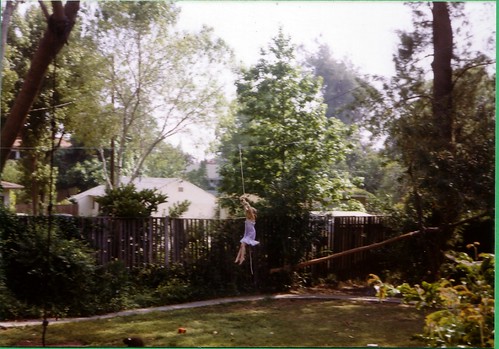
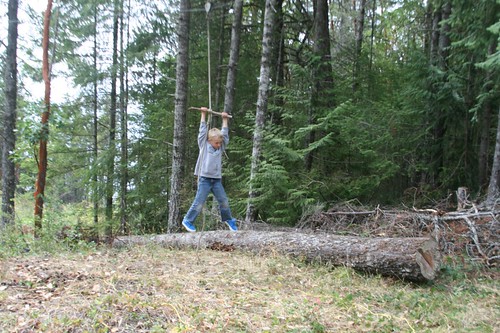
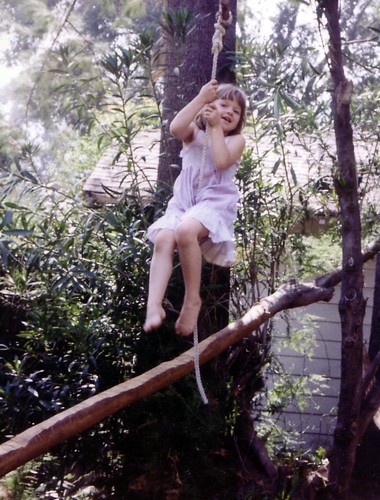
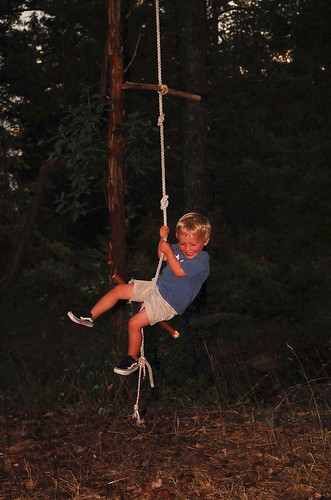
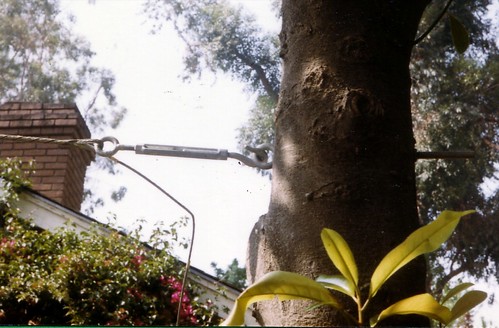
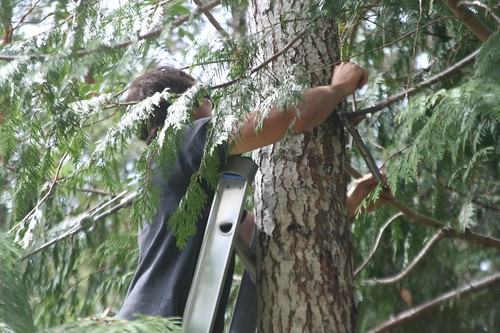
The galvanized steel of the cables and eyebolts and the polyethelyne of the rope are more durable than other artifacts I’ve been excavating. Week before last I spent many hours in the Cal Poly Art Resource Library using its expensive equipment to scan 250 35mm slides that had been boxed in cassette trays in my garage. They record moments from our wedding, from early days on the farm, from our family trips to Europe in 1978, to Hawaii in 1984, from our time in Claremont and Palo Alto. The slides were covered with dust and grease and their colors were faded and distorted. The scanner software and adjustments in Photoshop brought them back to life, some almost as good as new, many better. I gasped as our images of thirty years ago revived on the monitor.

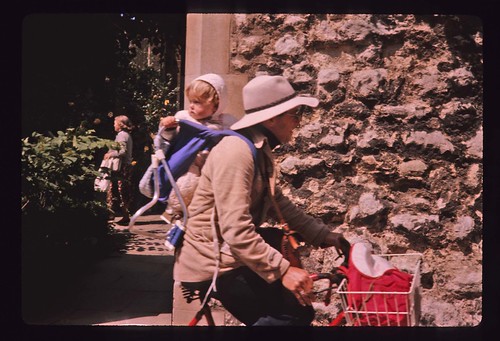
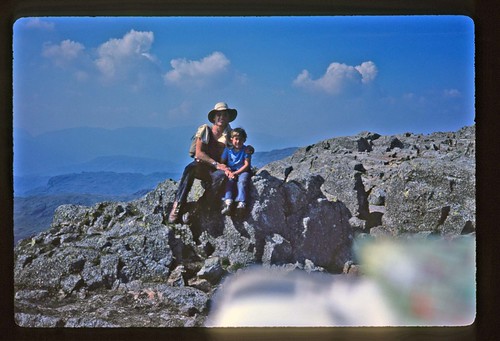
I spent much of the previous week in the CLA computer lab converting old VHS videotapes of English 510 Players productions of Twelfth Night (1990) and The Winter’s Tale (1994) to binary files. Like the slides, they needed to be restored to a more accessible and permanent medium. I’d discovered that the dozens of short segments I’d digitized nine years ago and placed on the University Media Server to provide material for my Triangulating Shakespeare website had decomposed over time into a kind of pixel jelly. Now I could replace them in larger, clearer format and at full length. But the new digital files will probably be no less fragile than the previous ones I’d assumed would last forever. The problem is called “bit-rot.” See the entry called “Data decay: even computers forget” on the Australian blog, Time, etc.; Humans in the big scheme of things.
This echoes the title of the work that Shakespeare rewrote as The Winters Tale, Thomas Greene’s The Triumph of Time. As I played and rewound and spliced the recitation of the character named “TIME” in Act 4, Scene 1 (performed fifteen years ago by the daughter of my wife’s best friend in elementary school) I slipped into the allegorical role myself:
I, that please some, try all, both joy and terror
Of good and bad, that makes and unfolds error,
Now take upon me, in the name of Time,
To use my wings. Impute it not a crime
To me or my swift passage, that I slide
O’er sixteen years and leave the growth untried
Of that wide gap, since it is in my power
To o’erthrow law and in one self-born hour
To plant and o’erwhelm custom. Let me pass
The same I am, ere ancient’st order was
Or what is now received: I witness to
The times that brought them in; so shall I do
To the freshest things now reigning and make stale
The glistering of this present, as my tale
Now seems to it.
When I watched the final scene, where a memorial statue comes to life after its subject was thought to have been dead for sixteen years scripted as a theatrical resurrection in a chapel, I felt that moment of performance on the altar of San Luis Obispo’s 1762 Mission Church quickening again, wrinkled now but still warm.
POSTSCRIPTS:
January 20 2010: Wow! Just watched the old Measure for Measure video. Really amazing that you managed to get such solid performance out of non-acting students. I found the play charming and — most importantly — the language really came alive. You should do some directing for community theater. — Elizabeth
November 30 2009: It was wonderful to hear from you. I just got started on Facebook. Wishing you happy holidays, Don
November 28 2009: How wonderful to hear from you! Unfortunately I can’t seem to open this link – which might be a good thing as I think I was a pretty shockingly bad actress–Ann
November 24 2009: Thanks Steven–it’s amazing! Tom
November 24 2009: Hi Steven! Wow. Thanks for this treasure trove! I remember lending my VHS copy of”Twelfth Night” to a friend soon after I received it. Never got it back. Almost twenty years later, my kids are saying “Daddy, you look weird. And why are talking so funny?” Congrats on leaving lasting wonderful impressions on your old students!–Greg
November 23 2009: What fun! Good to hear from you. Patty
November 23 2009: Participating in the English 510 Players Production of “Measure for Measure” was one of the highlights from my Cal Poly years. I’m sure I’ll cringe as I watch my performance but what an awesome experience it was. Thank you, Dr. Marx! –Candice
November 21 2009: This is great! Thanks for doing this Steven. We’ll give you a call for lunch next time we’re down–we had a really good time with you guys last time. Take care. –Craig
